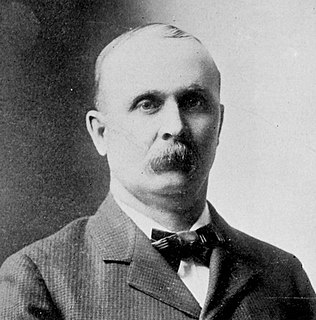Related Research Articles

Williams County is located on the western border of the U.S. state of North Dakota, next to Montana. As of the 2020 census, the population was 40,950. Its county seat is Williston.

Williston is a city in and the county seat of Williams County, North Dakota, United States. The 2020 census gave its population as 29,160, making Williston the sixth-largest city in North Dakota. The city's population nearly doubled between 2010 and 2020, due largely to the North Dakota oil boom.

Fort Snelling is a former military fortification and National Historic Landmark in the U.S. state of Minnesota on the bluffs overlooking the confluence of the Minnesota and Mississippi Rivers. The military site was initially named Fort Saint Anthony, but it was renamed Fort Snelling once its construction was completed in 1825.
Buford may refer to:

The Dakotas is a collective term for the U.S. states of North Dakota and South Dakota. It has been used historically to describe the Dakota Territory, and is still used for the collective heritage, culture, geography, fauna, sociology, economy, and cuisine among the two states.

John Buford, Jr. was a United States Army cavalry officer. He fought for the Union as a brigadier general during the American Civil War. Buford is best known for having played a major role in the first day of the Battle of Gettysburg on July 1, 1863, by identifying, taking, and holding the "high ground" while in command of a division.

Fort Union Trading Post National Historic Site is a partial reconstruction of the most important fur trading post on the upper Missouri, 1829-1867. The fort site is about two miles from the confluence of the Missouri River and its tributary, the Yellowstone River, on the Dakota side of the North Dakota/Montana border, 25 miles from Williston, North Dakota.

Fort Buford was a United States Army Post at the confluence of the Missouri and Yellowstone rivers in Dakota Territory, present day North Dakota, and the site of Sitting Bull's surrender in 1881.

The Missouri-Yellowstone Confluence Interpretive Center is a museum near Williston, North Dakota. It is dedicated to telling the story of the confluence of the Yellowstone and the Missouri Rivers in the western section of North Dakota near the Montana border. It features exhibits on the geography, geology, and history of the area. The interpretive center is located one-half mile east of historic Fort Buford near Williston, North Dakota. It also offers dramatic views of the Missouri and Yellowstone Rivers.
Buford is an unincorporated community in Williams County, North Dakota, United States. It is the nearest community to the Fort Union Trading Post National Historic Site. It is named for the nearby historic Fort Buford at the confluence of the Missouri and Yellowstone Rivers.

Mondak is a ghost town in Roosevelt County, Montana, United States, which flourished c. 1903–1919, in large measure by selling alcohol to residents of North Dakota, then a dry state.
Buford is a hamlet in central Alberta, Canada within Leduc County. It is located 2 kilometres (1.2 mi) south of Highway 39, 23 kilometres (14 mi) west of Leduc.
Aquilla Coonrod or Coonrad was an American soldier in the U.S. Army who served with the 14th, 48th and 125th Ohio Volunteer Infantry during the American Civil War, and with the 7th U.S. Cavalry and the 5th U.S. Infantry during the Indian Wars.
The Department of the Northwest was an U.S. Army Department created September 6, 1862 to put down the Sioux uprising in Minnesota. Major General John Pope was made commander of the Department. At the end of the Civil War the Department was redesignated the Department of Dakota. Immediately upon arriving in St. Paul General Pope sent letters to the Governors of Iowa and Wisconsin for additional troops to assist the 5th Minnesota Infantry Regiment. From Iowa he got the 27th Iowa Infantry Regiment and from Wisconsin he received the 25th Wisconsin Infantry Regiment. Both quickly crossed the border to assist with the uprising. The 25th Wisconsin was in Minnesota three months and the 27th Iowa was there a month before both headed south. After they departed, the Minnesota District would be garrisoned by Minnesota units: 5th, 6th, 7th, 8th, 9th, 10th Infantry Regiments, 1st and 2nd Minnesota Cavalry Regiments plus Minnesota Independent Cavalry Battalion as well as the 3rd Minnesota Light Artillery Battery. In 1864 companies of the 30th Wisconsin Infantry Regiment would see service in the Minnesota and Dakota Districts too.

Donald Stevenson was a cattleman and politician in North Dakota, US. A state assemblyman, he was also the first elected Emmons County treasurer.
The McCone Residence in Glendive in Dawson County, Montana was listed on the National Register of Historic Places in 1988.

Crow Flies High was the chief of a band of dissident Hidatsa people from 1870 until their band joined the reservation system in 1894. This band was one of the last to settle on an Indian reservation. A North Dakota State Park is named after him.

Heber Mansfield Creel was born in Missouri. Some sources indicate he was born in 1851 and others claim 1855.
References
- 1 2 "Weekly List". National Park Service. October 25, 2019.
